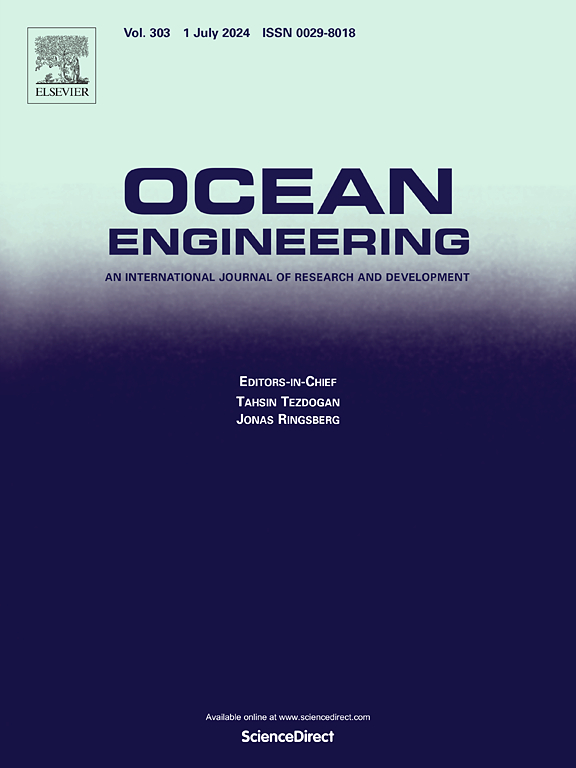Reduction of fluid forces on a circular cylinder in the laminar flow regime using a pair of airfoils
IF 5.5
2区 工程技术
Q1 ENGINEERING, CIVIL
引用次数: 0
Abstract
Flow around the cylinder, with/without a pair of airfoils symmetrical to the cylinder's horizontal axis, was simulated for a diameter-based Reynolds number (Re) of 100. The objective of this numerical study is to simultaneously reduce the values of the time-averaged and fluctuating forces acting on a system consisting of a pair of airfoils and a cylinder below those of a single cylinder by using different combinations of the parameters chord (c), angle of rotation (β), angle of attack (α), and the shortest distance between the aerodynamic center of the airfoil and the surface of the cylinder (g). The values of these key parameters are determined primarily through two approaches. The first approach involves emulating the flow pattern surrounding the system to match the potential flow pattern. The second approach involves disrupting the interaction between the shear layers from the cylinder by stretching them in the mean flow direction. The second approach has been demonstrated to exhibit superior performance in terms of reducing both time-averaged and fluctuating forces concurrently. The second approach has been demonstrated to exhibit superior performance in terms of reducing both time-averaged and fluctuating forces concurrently. The optimal geometrical parameters that yield the desired end results are determined to be c = 0.5D, α = 0°, β = 60°, and g = 0.2D. Utilizing these parameters has been demonstrated to result in a substantial reduction in the time-averaged drag, fluctuating drag, and fluctuating lift coefficients of the system, with the respective percentage reductions reaching 14.4 %, 92.1 %, and 73 %, respectively, when compared to the values obtained for a single cylinder.
利用一对翼型减少层流状态下圆柱上的流体力
在以直径为基础的雷诺数(Re)为100的条件下,模拟了有/没有一对与圆柱体水平轴对称的翼型在圆柱体周围的流动。本数值研究的目的是通过使用弦线(c)、转角(β)、迎角(α)和翼型气动中心与圆柱体表面之间的最短距离(g)等参数的不同组合,同时降低作用在一对翼型和圆柱体组成的系统上的时均和波动力的值。这些关键参数的值主要通过两种方法确定。第一种方法包括模拟系统周围的流型以匹配势流型。第二种方法是通过在平均流动方向上拉伸圆柱上的剪切层来破坏它们之间的相互作用。第二种方法已被证明在同时减少时间平均力和波动力方面表现出优越的性能。第二种方法已被证明在同时减少时间平均力和波动力方面表现出优越的性能。确定了产生理想最终结果的最佳几何参数为c = 0.5D, α = 0°,β = 60°,g = 0.2D。利用这些参数可以显著降低系统的时间平均阻力、波动阻力和波动升力系数,与单个气缸相比,分别降低了14.4%、92.1%和73%。
本文章由计算机程序翻译,如有差异,请以英文原文为准。
求助全文
约1分钟内获得全文
求助全文
来源期刊

Ocean Engineering
工程技术-工程:大洋
CiteScore
7.30
自引率
34.00%
发文量
2379
审稿时长
8.1 months
期刊介绍:
Ocean Engineering provides a medium for the publication of original research and development work in the field of ocean engineering. Ocean Engineering seeks papers in the following topics.
 求助内容:
求助内容: 应助结果提醒方式:
应助结果提醒方式:


